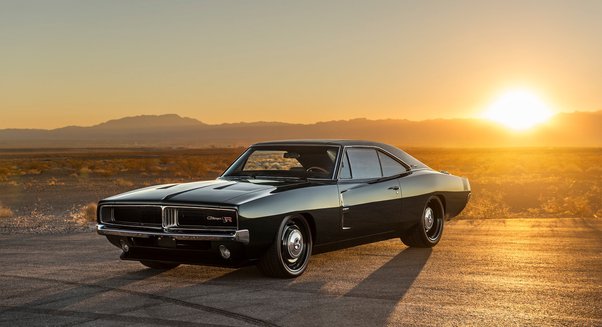
Honda is a car maker that has been around for only ninety-seven years, but in that time it has produced some of the best engineering feats in car showrooms. Honda owners want to preserve their classic Honda cars. And one of the best ways to do so is through Honda photos. A Honda 75 is the most iconic Honda car. The iconic Honda 75 has been becoming more rare and is beginning to disappear from our roads. It was still a great car when first released 23 years ago.
Silver Dawn variant
Ghia was one the most sought-after cars of all time. Its design and performance made it a sought-after classic among enthusiasts and collectors alike. It has unique details throughout the interior. Although the dashboard appears to be made from wood, it's actually made of aluminum with a wood grain pattern. These large, unusually shaped steel bezels are different from standard Rolls-Royces. A dashboard with a view of a lady kneeling on the grille is also featured.

1971 Ford Thunderbird
The 1971 Ford Thunderbird is the most beloved classic car of all time. There are many reasons why it has been so popular. Its 429-cubic-inch V-8, front-wheel drive, and stylish design have made it one of the most popular classic cars of all time. Thunderbird's sedan version has the same feel as a 1970s sports car and can seat four. This car was a hit from the beginning and remains one of the best-running automobiles of all time.
Chevrolet Camaro
The Chevrolet Camaro was a popular muscle car in the 1970s and 1980s. Its first generation models were powered by a 5.0-liter V-8 engine and 325 horsepower. Camaro ZL-1 special edition cost $2,500 and featured unique features such checkered flag front stripes, embroidered headseat logos, and 10-spoke black wheels. Its popularity rose in the 1970s when it was available with a limited edition of engine packages.
Chevrolet Bel-Air
Chevrolet Bel-Air, a classic vehicle that you can drive, is what you should be looking for. This car has been around for decades. The first generation was subject to many changes. The car saw many changes from 1953 to the present. The second generation featured a more powerful V8 motor and a new grille with a Ferrari-styled grille. The doors, glass and trunk were also redesigned.

Saab 9-3
The Saab 9-3 is a classic car that was produced from 1998 to 2003. It has been through many modifications and redesigns throughout the years. Saab introduced a turbo- or non-turbo engine in 2003 to its lineup. In 2006, the car received a new instrument panel that included steering-wheel controls. A turbo-X engine was available for the car, which produced 280 horsepower.
FAQ
How long does it take to become a good mechanic?
Expert mechanics take years of practice and extensive experience. It is best to learn how to fix cars under the supervision and guidance of a professional mechanic.
You will spend time in a workshop learning everything you can about cars. You will need to read books on mechanical engineering and car design.
Additionally, you will need to attend an auto school.
The most important thing is to start early. You don't have to wait until you are older to start studying automotive technology. Get started now if you are interested in becoming a mechanic.
Is a career in automotive mechanic promising?
If you are determined to excel, the automotive industry offers many opportunities. It is important to work hard and learn as much from others as you can in order to succeed in this industry.
You'll need to have excellent communication skills because you'll spend most of your time talking to customers and other employees. It is important that you are willing to travel, work long hours and be able to commute.
Take classes at community colleges or universities if you're interested to work in automotive. Many schools offer programs specific to students interested in sales, auto repair, or customer service.
Studying mechanical engineering is an option if you're interested in pursuing a degree. It is possible to earn a bachelor’s degree in only four years.
Many companies will also hire graduates right out of school. So it's wise to start looking for employment while you still have the chance to study part-time.
After your education is complete, you will probably need some training in order to become an automotive technician.
This means that you must pass the Automotive Service Excellence exam. This exam covers topics such as engine maintenance, brakes and suspension.
Once you pass the ASE test, your license can be applied for by the National Institute for Automotive Service Excellence.
Private individuals can have their vehicles repaired with a license. Based on the services rendered, you will receive compensation.
Not all states require licensing. However, licensing is required for anyone who plans to work outside the home state.
Some states don’t issue licenses until a certain amount has been completed. If you are one of these people, you might need to look for another alternative.
How long does an apprenticeship in automotive mechanics last?
It takes three years to complete an apprenticeship as an automotive mechanic. It includes two years of school and two years as an apprentice. The first year is spent learning all aspects of the trade, including theory, practical skills, and safety procedures. You'll also learn the safe and efficient use of tools during this first year. After the first year, a second year will be spent on-thejob training. This year you'll get experience in different trades. These are also the times you can attend formal courses.
The final year of this program is spent in obtaining qualifications and becoming certified in your field. These include NVQs. They are awarded after passing exams on specific topics within the industry. Additionally, HNCs are Higher National Certificates that cover general subjects such management, customer service, and business administration. Finally, there are City & Guilds certificates that are offered for those who wish to become qualified in certain trades.
What information do I need about car mechanics
For an auto mechanic job, you don’t have to be an expert in cars. The only thing you need is the ability to fix them. Most people start by fixing things like changing tires or fitting brake pads.
You'll need to know how to read diagrams, understand written instructions and follow basic rules of good practice. You will also need to understand how parts should be replaced or repaired.
You should not attempt to fix vehicles without proper training and guidance. This is especially true when you are dealing with costly components like engines and transmissions.
Although you won't have to know much about automobiles, you must be familiar with the basics of mechanical engineering as well as physics. This will include understanding the basic principles of engine operation and brake function.
Noting that all situations are possible, it is important to be prepared. If your vehicle has been in an accident, you might need to be able to handle it. You will also need to be able to deal with accidents and breakdowns.
You should also be open to learning quickly. You will need to be able not only to diagnose problems but also to perform simple maintenance tasks like tightening bolts and nuts.
What length is an automotive course?
An automotive course lasts 3 years.
The first year is spent on theory, learning all about cars. The second year is spent on practical training where you learn how to drive, fix engines, and do other mechanical jobs around the car. You will spend the final year working in a local garage to gain real-world experience.
Statistics
- Apprentice mechanics earn significantly less hourly than mechanics who have completed training, with a median wage of approximately $14.50 an hour, according to PayScale. (jobhero.com)
- There were 749,900 jobs available for automotive service technicians and mechanics in 2016, which is expected to grow by six percent through 2026. (jobhero.com)
- According to the BLS, total auto technician employment is expected to exceed 705,000 by 2030. (uti.edu)
External Links
How To
How to Become an Automotive Technician
An automotive technician provides repair services and maintenance to vehicles. He/she can be found at auto shops, garages and service centers. He/she works with customers to repair their cars and trucks, ATVs or snowmobiles. An automotive technician must be able to diagnose problems and make repairs quickly, safely, accurately, and efficiently.
A person who wants to work as an automotive technician should first obtain an associate degree from a vocational school. After completing this program, he/she must pass the National Institute for Automotive Service Excellence (ASE) certification exam. ASE stands as American Society of Mechanical Engineers. The ASE certification test consists two sections. One section tests mechanical knowledge; the second section tests practical skills. To pass the test you must go to one of the authorized testing facilities. These locations can be found online, or by contacting your local car dealer.
A candidate must pass the state exam after passing the test to become an automotive technician. It varies depending on the location of the applicant. Some states require candidates to complete a training program, while others let them study on their own. In addition, some states license technicians immediately after they receive their license, while others wait until they have completed at least six months of employment as an automotive technician.
An applicant should apply to a local auto shop in order to start their career as an automotive technician. Once hired, most new employees start out working as apprentices. Apprenticeship programs last about three years. Students learn basic repair skills such as changing oil and adjusting brakes, changing tires, cleaning spark plugs and inspecting engine compartments. Some students are able to perform more advanced repairs such as replacing shocks and installing air filters. Many schools offer classes during normal business hours. However, there are some schools that offer evening classes for those who need them.
Once a student finishes his/her apprenticeship, it is possible to become a Journeyman. Journeymen can spend up to five years learning how major systems work, including transmissions, differentials. They also learn how to adjust steering gear and suspensions. They are also taught how to troubleshoot electrical components and remanufacture engines. Because they have a good understanding of the job and what customers expect, many employers prefer to hire journeymen.
Candidates who pass the required exams are eligible for a license. The Bureau of Labor Statistics estimates that there were nearly 1.7 million jobs available for automotive mechanics in 2010. That number was expected to grow by 18 percent from 2009 to 2020. A candidate who plans to open a shop should expect to spend many thousands of dollars on equipment and supplies.
The salary of an automotive technician will depend on many factors including where you live, your education level, experience and the type of employer. An average salary for a jobless individual is $20,000 per annum. Someone who has only a highschool diploma could earn around 21,000 dollars per year. Those with an associate's degree earned approximately $24,000 per year. Technicians with a bachelor's degree earn about $27,000 per annum. The average annual salary for those with master's degrees was $32,000. A common trend is for salary increases to occur so a professional making less than $30,000 can reasonably expect to be earning $40,000 or more within a few years.